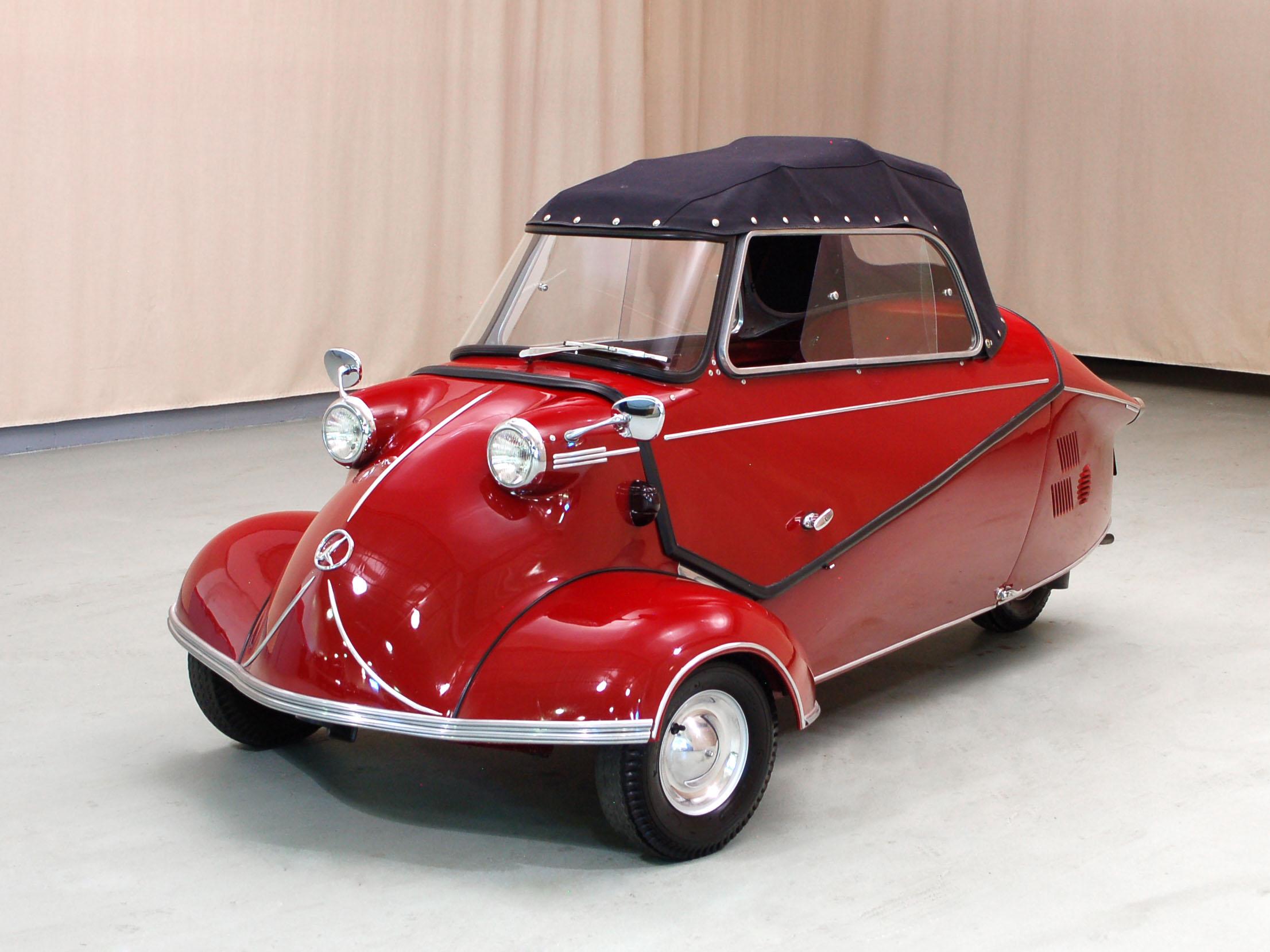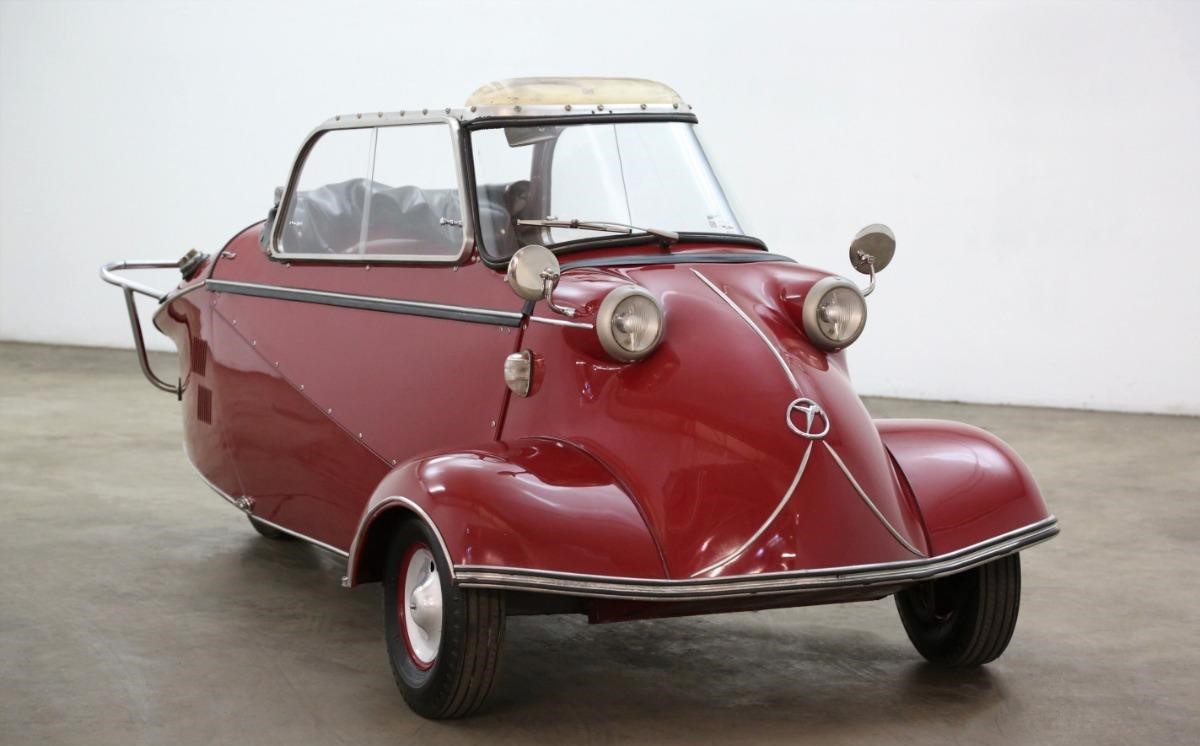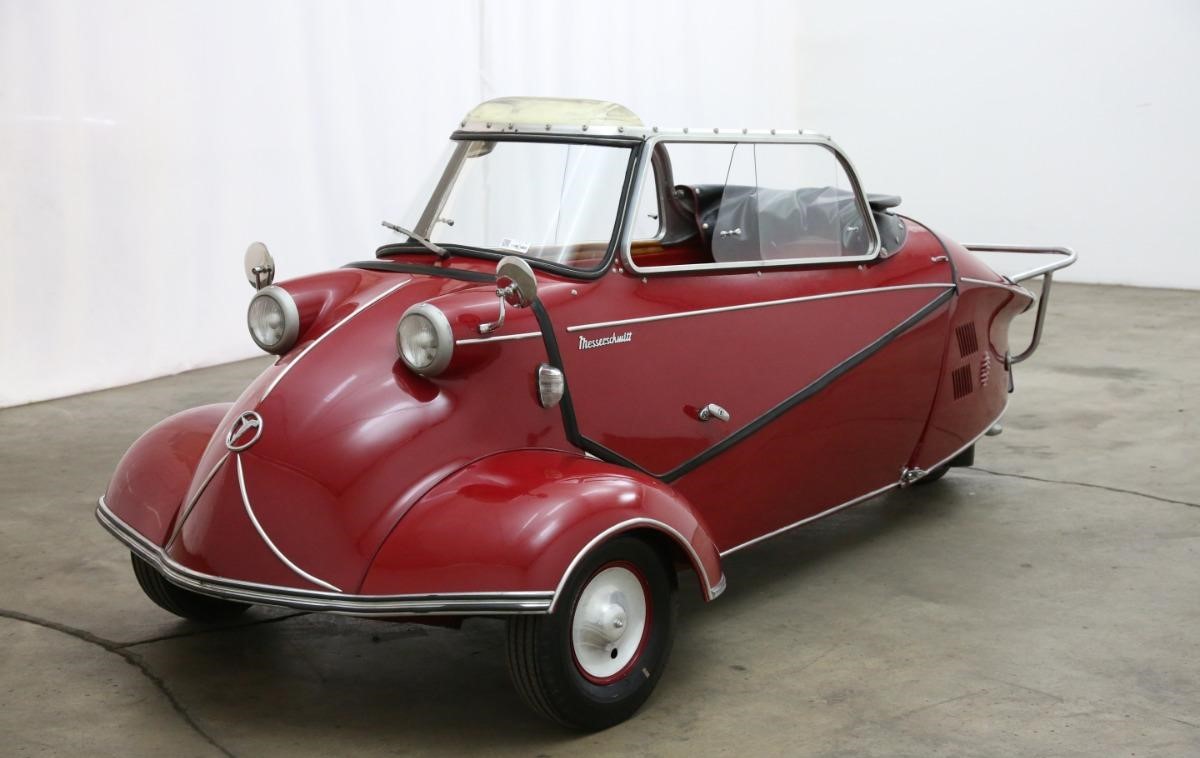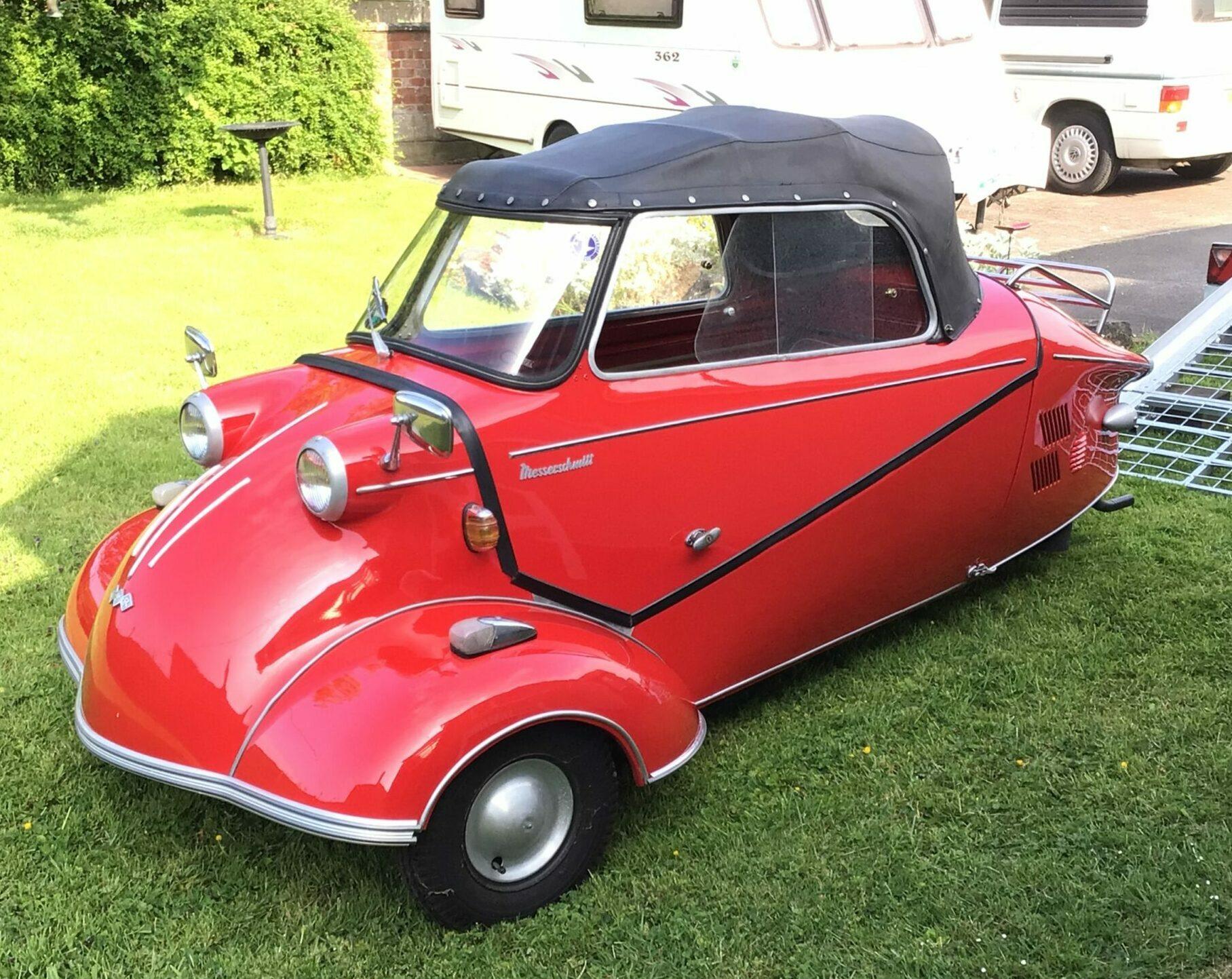1959 KR 200
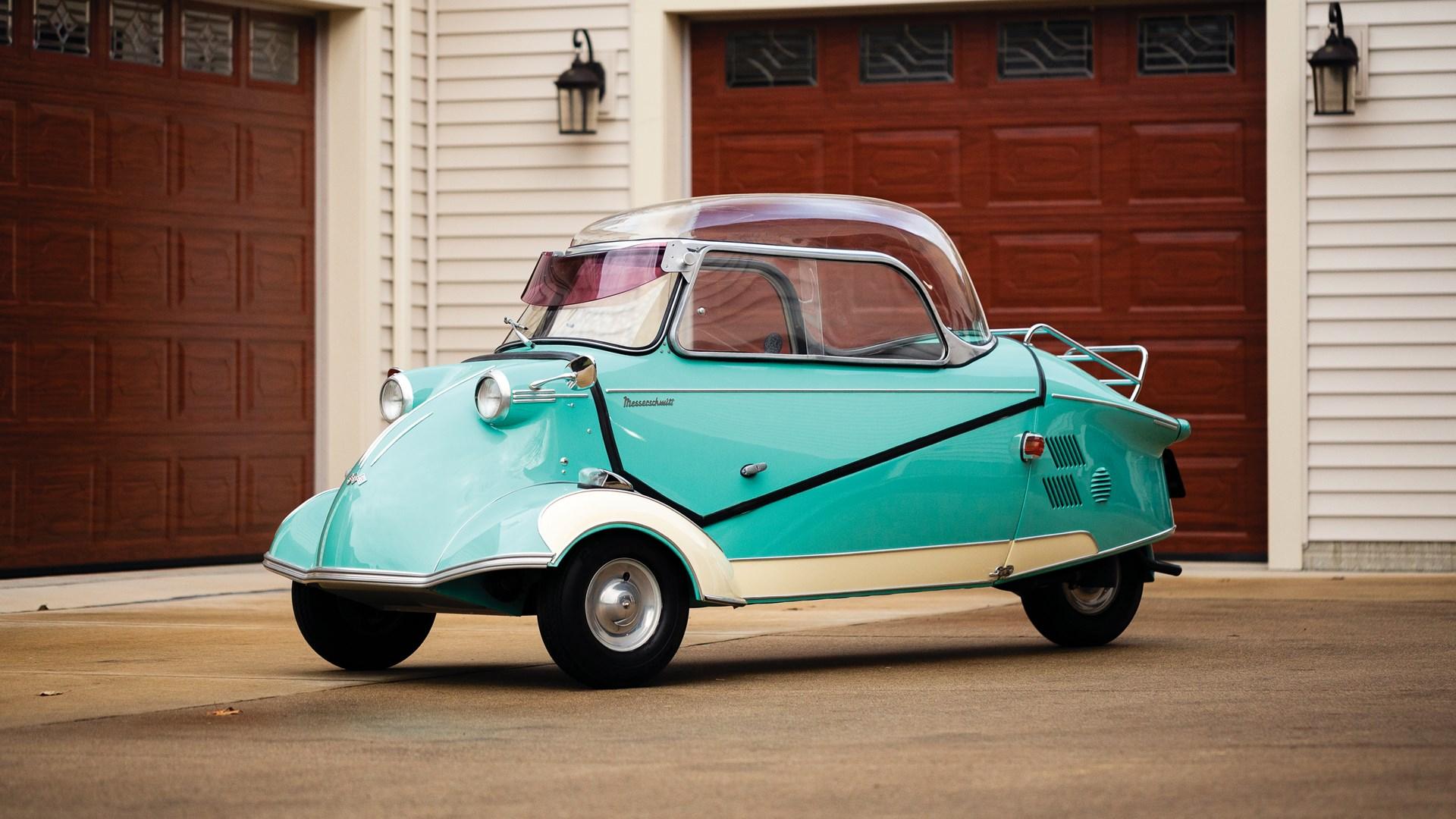
The descriptions of the Classic Cars in the Directory were partly generated or supplemented with the help of artificial intelligence (AI). The content may occasionally not always be entirely accurate or factually correct despite careful checking.
The Messerschmitt KR 200 1959 is a three-wheeled microcar that was produced between the years 1955 and 1964. German aviation engineer Fritz Fend is credited with designing this unique vehicle, which was manufactured by Messerschmitt AG in Germany. The KR 200 (Kabinenroller or cabin scooter) was primarily designed as a low-cost transportation option for urban areas, especially in post-war Europe where fuel was still scarce and expensive.
The KR 200 has a highly distinctive design that stands out even today. Its canopy-like roof and teardrop-shaped body are made of lightweight materials that contribute to its extraordinary fuel efficiency. The car is powered by a 191cc single-cylinder two-stroke engine that produces 10 horsepower, which was a common engine size for small cars of that era.
The KR 200 had a top speed of around 65 km/h (40 mph) and could travel approximately 80 km (50 miles) on a single tank of fuel. The car was equipped with a four-speed manual transmission that allowed the driver to shift gears with a hand-operated lever mounted on the steering column.
The KR 200 was also equipped with hydraulic suspension systems that provided a smooth ride on uneven surfaces. The steering was implemented by a handlebar-like steering wheel which was operated using both hands instead of just one, and the vehicle had a single headlight mounted above the front wheel.
The vehicle's design posed a few challenges, however. Its narrow tires made it hard to steer, and it had limited cargo space, which was not surprising given its compact body. Nevertheless, these flaws were almost insignificant given the KR 200's success in its intended purpose as an affordable, fuel-efficient urban vehicle.
Today, the Messerschmitt KR 200 1959 remains a highly sought-after collector’s item due to its striking appearance, technological innovations, and historical significance as a product of postwar Germany's industrial revival. It serves as a testament to the ingenuity of the people who designed and created sustainable transportation solutions during a time of economic turmoil and scarcity.
Milestones
1. Introduction of Messerschmitt KR 200 in 1959 2. Equipped with a 191 cc Fichtel & Sachs two-stroke engine and a maximum speed of 56 mph 3. Three-wheeled design, with two wheels at the front and one at the back 4. Aerodynamic, bubble-shaped canopy for the driver and passenger 5. Implementation of a reverse gear system, allowing the vehicle to be easily maneuvered in tight spaces 6. Rising popularity and sales numbers, particularly in Europe 7. Phasing out of production in 1964 due to changing regulations and market demand 8. Continual popularity among collectors and enthusiasts, with numerous restored and preserved models still in existence today.Technical
- Production year: 1959 - Manufacturer: Messerschmitt - Model: KR 200 - Body Type: Three-wheeled microcar - Engine Type: Fichtel & Sachs 191 cc single-cylinder two-stroke engine - Horsepower: 9.7 hp - Top speed: 56 mph (90 km/h) - Fuel type: Gasoline - Transmission: Four-speed manual - Brakes: Hydraulic Drum brakes - Suspension: Independent coil suspension at the front, transverse leaf spring at the rear - Steering: Handlebar steering (similar to a motorcycle) - Dimensions: Overall length - 2.85 meters; Overall width - 1.31 meters; Overall height - 1.30 meters - Weight: 230 kg (507 lbs) - Fuel economy: 51 mpg (4.6 L/100 km) - Number of seats: 2 (tandem seating) - Production volume: Approx. 40,000 units